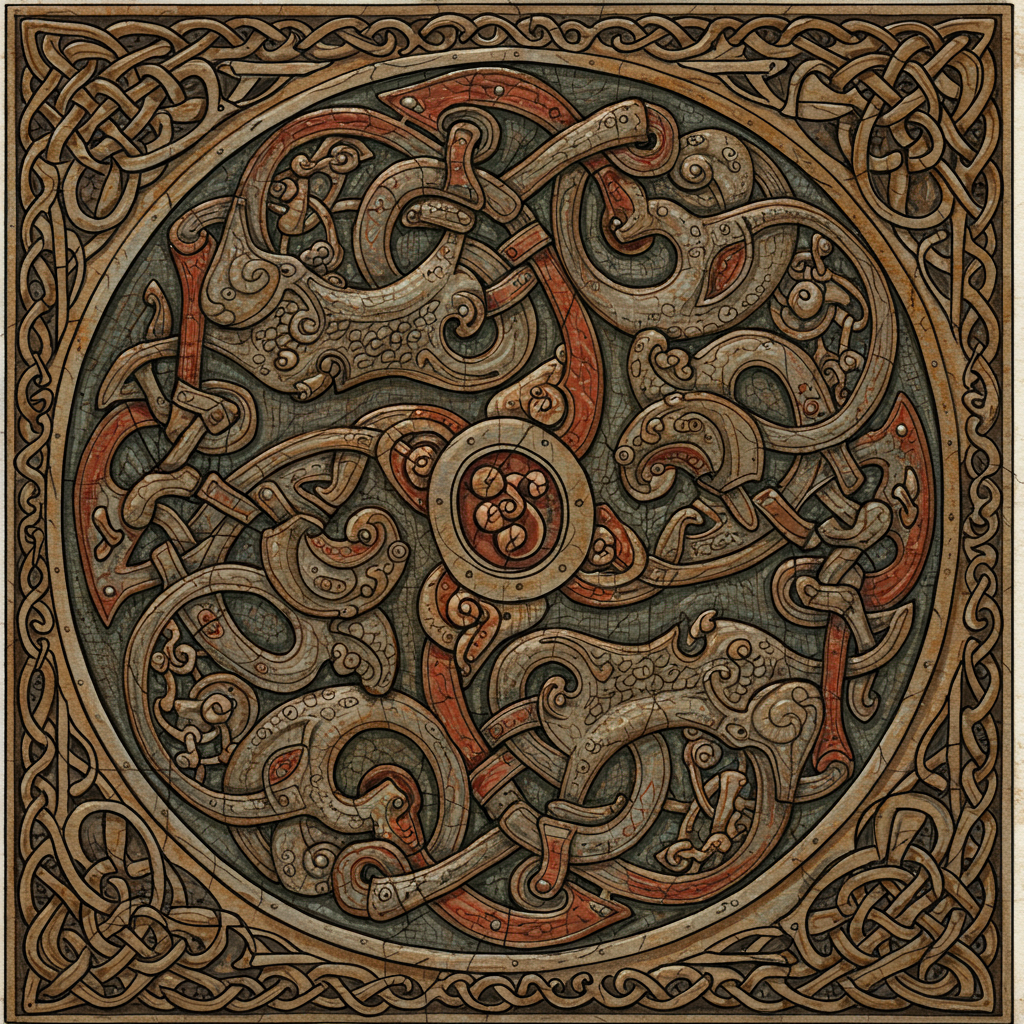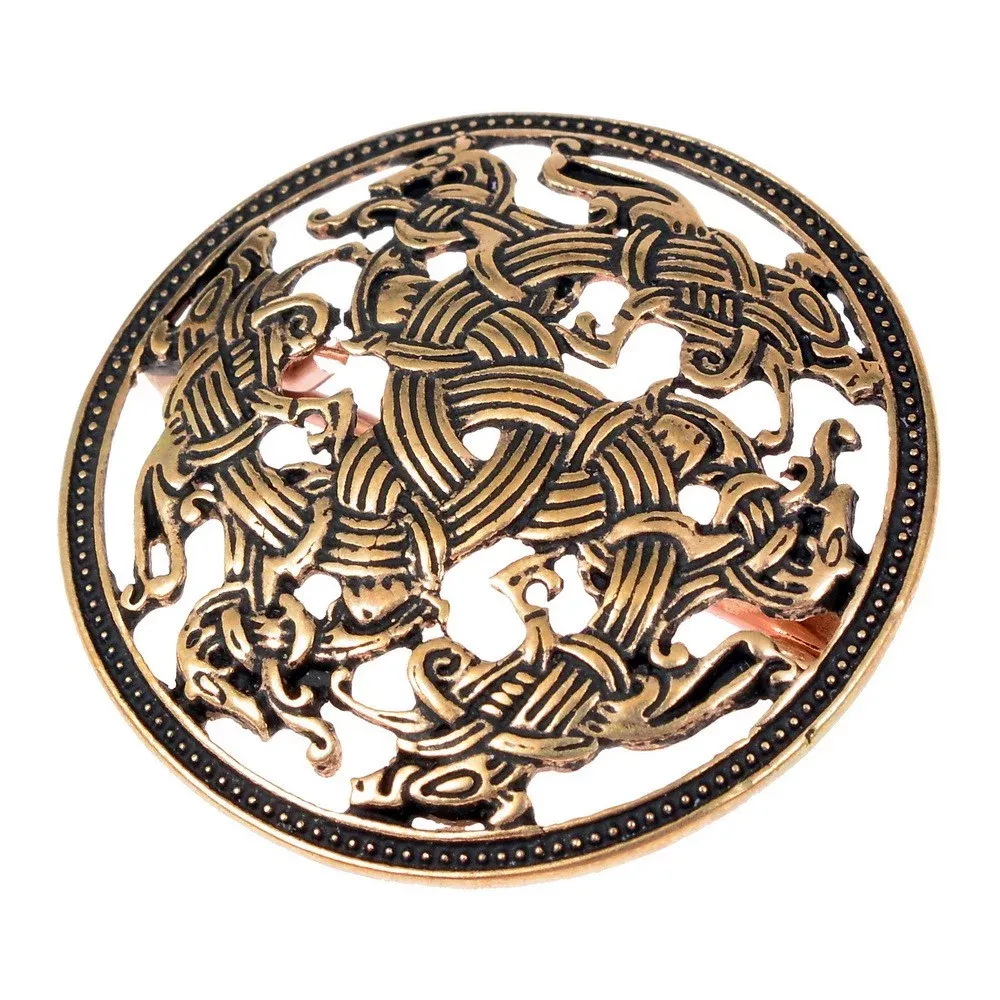What is the Ringerike Viking style?
The Ringerike style is one of the most distinctive manifestations of Viking art, which flourished approximately between the 10th and 11th centuries. Named after the Ringerike region in Norway, the style is famous for its decorated runestones, which provide a vibrant testimony to the visual culture of the Vikings of that time. It is considered an evolution of the Mammen style, with a marked preference for zoomorphic ornamentation and mythological motifs.

Characteristics of the Ringerike Style
This style is distinguished from other Viking styles by its rich representation of animals and plant motifs. The Ringerike zoos include lions, birds, snakes, and dragons, which are depicted in elongated and stylized forms. The distinctive feature is the faces of the animals, which often have almond-shaped or round eyes. Moreover, the plant themes, such as tendrils and plants in intertwined designs, show a clear influence from Anglo-Saxon and Ottonian art.
Influences and Diffusion
Although this style is named after a specific region, its development likely took place in Danish centers and spread throughout Scandinavia, even reaching England and Ireland. The rise of the Ringerike style coincided with the tradition of erecting runestones, providing an ideal platform for its dissemination as an integral part of late Viking art.
Elements and Symbolism
- Crosses and Palmettes: The Ringerike style is notable for the incorporation of crosses and palmettes in its designs, reflecting the interaction with Christianity and contemporary European art.
- Symmetry and Asymmetry: Although many designs are based on rigid symmetry, especially in plant compositions, they often exhibit dynamic asymmetry, introducing an element of movement and life into the works.

Representative Works
This artistic style is reflected in several significant works:
- Vang Stone: One of the most iconic runestones, adorned with intricate plant and animal motifs arranged in spirals.
- Söderala Weathervane: Vividly displays intertwined animals and plant patterns, showcasing the craftsmanship of the era.
Historical Context
The emergence of the Ringerike style coincided with a period of cultural and political transformation in Scandinavia. The expansion of Christianity and contact with other cultures, especially Anglo-Saxon and Ottonian, left an imprint on the stylistic development and choice of artistic motifs.
In essence, the Ringerike style embodies the complexity and evolution of Viking art, with its wealth of zoomorphic and plant details, as well as the cultural fusion reflected through the exchange of ideas during the late Viking period. Its influence and legacy extend beyond Scandinavia, reaching the British Isles, demonstrating the geographical reach and artistic durability of this vibrant style.




























